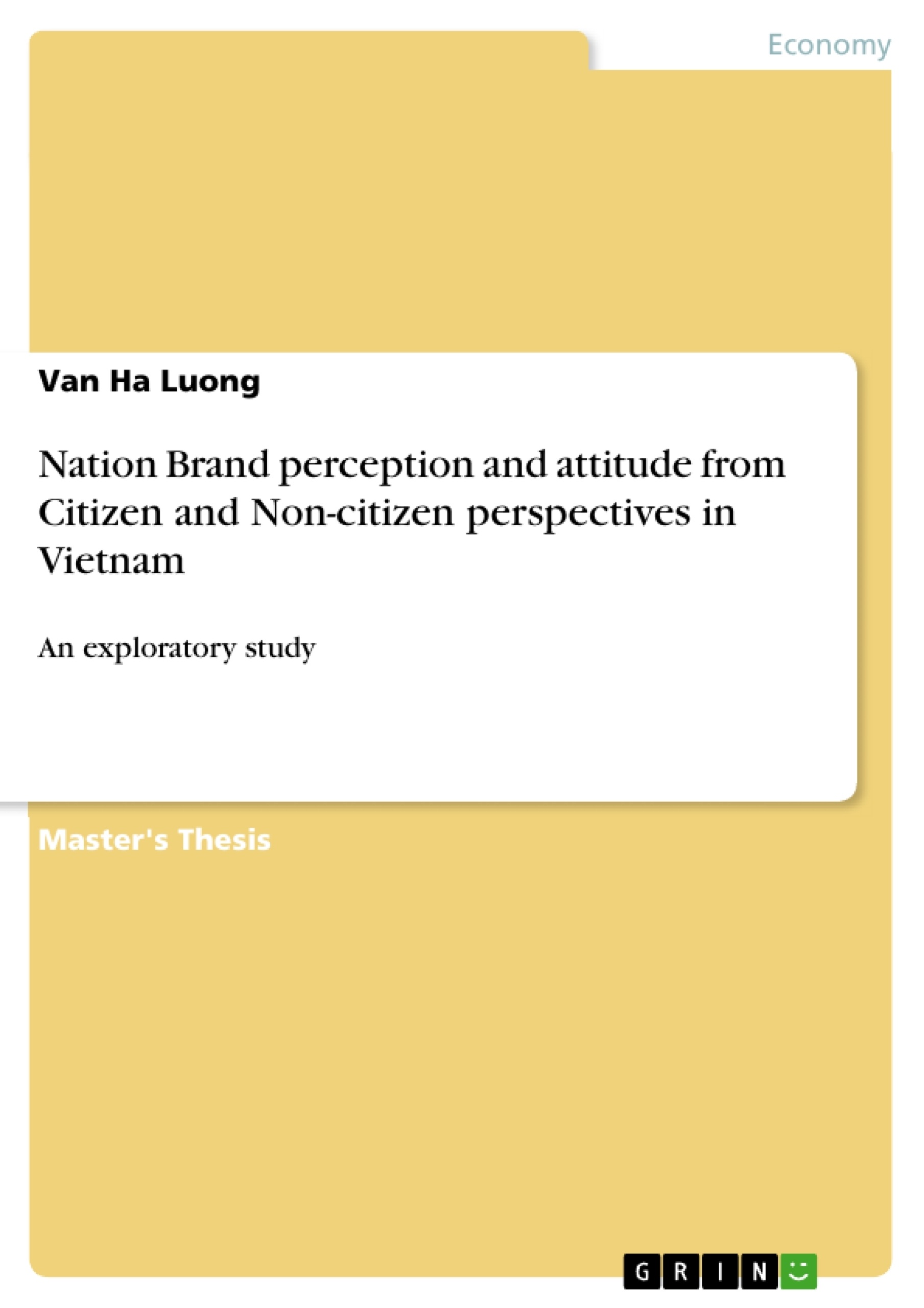This thesis aims to explore the perception and attitude on the Nation Brand of Vietnam from the perspectives of its people and outside residents (hereinafter referred to as Citizens and Non-citizens) based on the Anholt's Hexagon conceptual framework (a Nation Brand framework suggested by Simon Anholt). The study also examined the impact of the elements that make up Nation Brand on the attitude of its audiences.
An online survey approach was used to collect the data with a sample of 436 Vietnamese Citizens and 100 non-citizens. Exploratory Factor Analysis (EFA) and Multiple Linear Regression then were employed to analyze the data with SPSS software.
Findings of this empirical research indicate that Vietnam is perceived by its Citizens through only Tourism, Political efforts of the government (Governance), People and Export dimensions while all six dimensions of Anholt's Hexagon (People, Tourism, Governance, Investment, Culture, Export) existed in the perception of non-citizens.
Implications also exist for policy makers and stakeholders about the importance of each elements of Nation brand on audiences’ attitude.
Inhaltsverzeichnis (Table of Contents)
- ABSTRACT
- ACKNOWLEDGEMENT
- LIST OF TABLES
- LIST OF FIGURES AND PICTURES
Zielsetzung und Themenschwerpunkte (Objectives and Key Themes)
This thesis aims to explore the perception and attitude towards the Nation Brand of Vietnam from the perspectives of its citizens and non-citizen residents. The study utilizes the Anholt's Hexagon conceptual framework to examine the impact of Nation Brand elements on audience attitudes.
- Nation Brand Perception and Attitude from Citizen and Non-Citizen Perspectives
- The Anholt's Hexagon Framework and its Application to Vietnam
- Impact of Nation Brand Elements on Audience Attitudes
- Empirical Research Methodology and Data Analysis
- Implications for Policy Makers and Stakeholders
Zusammenfassung der Kapitel (Chapter Summaries)
The thesis begins with an introduction to the concept of Nation Branding and its relevance to Vietnam. It then explores the theoretical framework of Anholt's Hexagon and its application to the study. The research methodology, including the online survey approach and data analysis techniques, is discussed in detail. The findings of the empirical research are presented, comparing the perception of Vietnam's Nation Brand by citizens and non-citizens. The thesis concludes with a discussion of the implications of the research findings for policy makers and stakeholders, highlighting the importance of various Nation Brand elements in shaping audience attitudes.
Schlüsselwörter (Keywords)
Place branding, Nation Branding, Nation brand, Nation image, Competitive identity, Vietnam, Nation Brand Index, Anholt's Hexagon.
- Arbeit zitieren
- PhD Candidate Van Ha Luong (Autor:in), 2016, Nation Brand perception and attitude from Citizen and Non-citizen perspectives in Vietnam, München, GRIN Verlag, https://www.grin.com/document/357288



